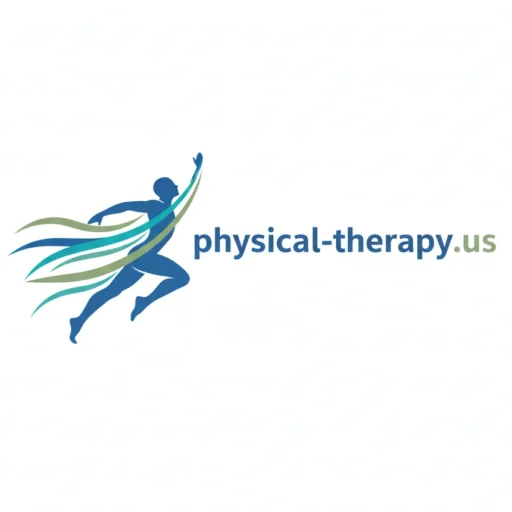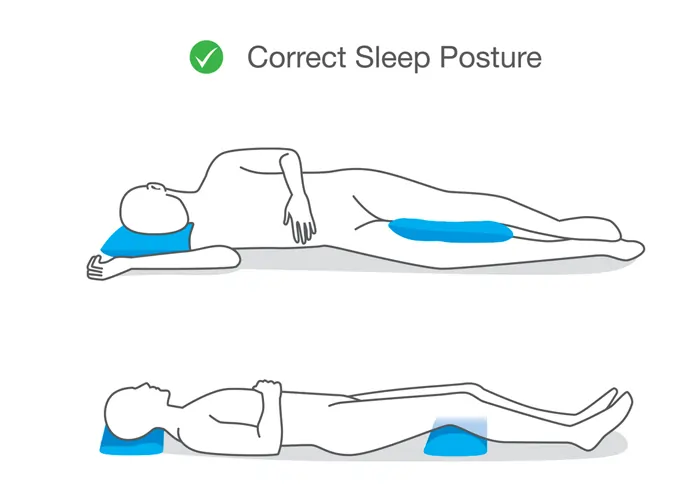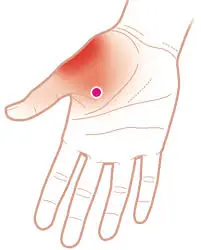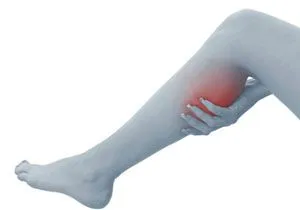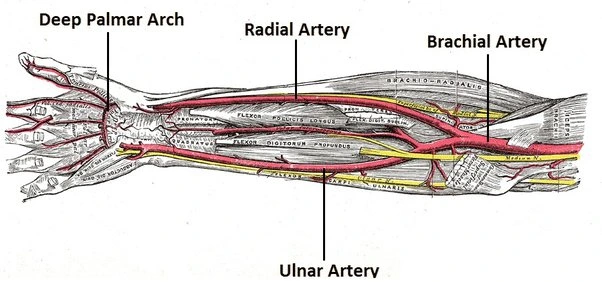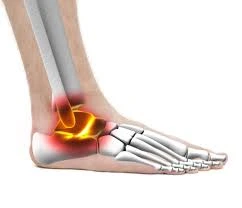How to Sleep in lower Back Pain?
Introduction:
Having difficulty sleeping at night due to lower back pain can result in a vicious cycle of pain and stress that causes the issue. Using measures that support the spine and lessen strain is crucial since poor sleep posture can worsen pain or cause healing to be delayed.
Correct sleep techniques can aid in the healing process, improve the quality of sleep, and improve general well-being when coping with lower back pain. In addition to making it difficult to get through the day, back pain can also make it more difficult to obtain a decent night’s sleep. Finding a comfortable position to fall asleep in might be difficult.
Understanding Lower Back Pain:
Sleep quality has a significant impact on the severity and duration of lower back pain, making it essential for managing it. Selecting the ideal sleeping posture can have a big impact on pain management and promote a good night’s sleep. Let’s examine the typical causes of lower back pain in order to gain a better understanding of this.
Extended durations of sitting or standing with bad posture can put too much strain on the lower back, causing pain and discomfort. This is because hunching over or slouching alters your natural spinal posture, which puts stress on the ligaments and muscles that support it. The body’s weight is distributed evenly by a properly aligned spine, which lessens the strain on the back muscles. Maintaining good posture greatly reduces strain and encourages a healthier, pain-free back, particularly when prolonged immobility is involved.
Muscle Strain:
The muscles in the lower back may be overworked and strained when we lift something incorrectly or beyond our physical capabilities. To reduce the chance of harm, it is crucial to handle large objects carefully and with the right lifting techniques. Lower back muscular strains can be considerably decreased by using slow, controlled motions and being aware of our body’s limitations.
The soft inner part of a spinal disc pushes through a gap in the harder outer layer to cause herniated discs. This disorder, sometimes referred to as a ruptured or slipped disc, can cause compression of the surrounding nerves, which can cause excruciating lower back pain. In certain situations, pain, numbness, and weakness may radiate down the legs as a result of the ruptured disc pressing against the nerves.
It’s interesting to note that certain sleeping postures might either make this condition better or worse. One way to preserve the lower back’s natural curve and possibly lessen strain on the damaged disc is to sleep on your back with a pillow beneath your knees.
Sedentary Lifestyle:
The muscles that support the lower back can be severely weakened by a sedentary lifestyle, which is characterized by extended periods of idleness and little physical exercise. Underuse causes these muscles to weaken and become less flexible, which reduces their ability to support the spine as it needs to. Poor posture and increased strain on the lower back are caused by weak back muscles, which frequently lead to persistent pain and discomfort.
Exercise enhances your body’s overall mechanics and flexibility in addition to strengthening your core muscles, which include those that support your spine.
9 Sleep Tips for Back Pain:
Find the right position:
Proper sleeping posture can improve spinal alignment and greatly reduce back pain. By widening the gaps between vertebrae, curling into a fetal position can help people with sciatica or ruptured discs. A supportive mattress and pillow, as well as the appropriate position, can significantly improve the management of sleep-related pain.
Get a good mattress:
- Almost 63% of participants in one study said that using a new sleep regimen significantly reduced their low back pain.
- Make sure the mattress provides you with enough support to keep your spine in the posture you want when standing.
- Although doctors used to usually advise firm mattresses, studies have revealed that, in comparison to other mattress types, patients with low back pain actually sleep worse on really hard mattresses. Your joints could twist and hurt more if you go in too deeply.
- Try sleeping on various mattress types in hotels or at friends’ homes to determine what feels best.
Get into and out of bed carefully:
- Although it might seem apparent, take additional caution when getting in and out of bed. Carefully getting into and out of bed is crucial to avoiding tension on your lower back, particularly if you’re already in pain. Sitting on the edge, lowering your body onto your side with your arms for support, then raising your legs onto the bed while maintaining a straight spine, is how you get into bed. These simple, deliberate motions might lessen the chance of worsening back pain and safeguard your spine.
Exercise your core:
- Reducing lower back discomfort and enhancing the quality of your sleep can be achieved by strengthening your core muscles. Maintaining proper posture, supporting your spine, and lessening the strain on your lower back while you’re lying down are all made possible by a strong core. You can improve stability and reduce discomfort at night by incorporating mild core exercises into your day routine, such as bridges, pelvic tilts, or abdominal tightening. With time, having a strong core can make it easier for you to sleep and help you avoid getting back discomfort again.
Try gentle yoga stretches before bed:
Including mild yoga poses before bed can help ease lower back pain and get your body ready for a good night’s sleep. Easy poses like child’s pose, cat-cow stretch, and knee-to-chest posture can help reduce lower back strain, increase flexibility, and loosen tight muscles. In addition to promoting relaxation and lowering tension, these stretches also help to quiet the neurological system, which facilitates sleep. Stretching mindfully for a few minutes every night can significantly improve the quality of your sleep and help manage back pain.
Medication may help:
- While treating back pain, some drugs can also help you fall asleep.
- For short-term use, over-the-counter painkillers such as aspirin, acetaminophen (Tylenol), or ibuprofen (Advil or Motrin) may work well. There is also a “PM” version of these medications that includes a sleep aid. The long-acting medication naproxen sodium (Aleve) may provide pain relief all night long.
- Prescription medications that aid with sleep include zolpidem (Ambien), zaleplon (Sonata), suvorexant (Belsomra), and eszopiclone (Lunesta).
- Prescription medications for back pain include muscle relaxants such as cyclobenzaprine (Flexeril), antidepressants like doxepin or duloxetine (Cymbalta), or medications that combine antidepressant and pain-relieving properties like amitriptyline.
Establish a bedtime routine:
- Establish a routine, such as cleaning your teeth, putting on your jammies, and setting the alarm. Avoid working, watching TV, or reading in bed.
Cut down on stress:
- The main cause of sleeplessness is stress. Back pain is also associated with it. Thus, try to find strategies to de-stress and improve your stress management. Avoid using alcohol as a self-medication because it disrupts your sleep.
- Engage in some calming activities. Inquire with your doctor or physical therapist about early-morning back exercises and try some relaxing techniques.
Don’t give up:
- Avoiding back pain is the greatest way to sleep well, but it’s not always possible. Although many people endure pain, it is frequently preventable and treatable.
Sleeping positions that reduce back pain:
Both physical and mental well-being depend on getting a decent night’s sleep. Simple adjustments to your sleeping position might help relieve back pain.
Sleeping on your side:
 Sleeping on your side
Sleeping on your side
Your spine is relieved of pressure in this position. Your condition won’t improve if you just sleep on your side.
Sleeping on your back:
 Sleeping on your back
Sleeping on your back
Your lower back’s curve may be preserved, and your back muscles may become more relaxed as a result. You put less stress on your pressure points as a result.
Sleeping on your stomach:
If you are unable to sleep in any other position, place a pillow beneath your hips and lower abdomen to ease the tension on your back. It can alleviate any strain on the area between your discs.
Sleeping in a Reclined Position:
 Sleeping in a Reclined Position
Sleeping in a Reclined Position
To get the finest alignment and support while sleeping in this position, think about purchasing an adjustable bed.
A disorder known as isthmic spondylolisthesis occurs when one vertebra slides over the one underneath it. Your spine will feel less strain at this angle.
The Fetal Position:
 The Fetal Position
The Fetal Position
- After lying on your back, slowly turn over onto your side.
- To avoid any imbalances, don’t forget to occasionally switch sides.
Switching Positions:
To improve circulation and avoid muscle stiffness, it is essential to exercise frequently and stretch gently. A more pleasant sleep experience can be achieved by promoting flexibility, reducing muscle tension, and preventing pain through positional changes and the use of moderate stretches.
Advice for Improving the Relaxation of Your Sleep:
Finding the ideal sleeping posture is only one aspect of ensuring the highest possible quality of sleep. The following useful advice will improve your overall quality of sleep:
- Selecting the Right Mattress and Pillows: It’s important to spend money on a mattress that will support your spine well.
- Using Body Pillows and Other Supports: Body pillows can be extremely beneficial, particularly for people with lower back problems or pregnant women. Additionally, it gives you comfort and security, which improves the quality of your sleep in general.
- Creating a Comfortable Sleep Environment: The quality of your sleep is greatly impacted by a calm sleeping environment. Invest in blackout curtains to filter out outside light and keep your space dark. Because lower temperatures are better for sleeping, keep your room at a comfortable temperature, typically between 60 and 67°F (15 and 20°C). To create a calm environment that encourages deep, restful sleep, think about employing a white noise machine to block out distracting noises.
You may greatly improve the quality of your sleep and have more pain-free, restorative sleep every night by putting these suggestions into practice and customizing your sleeping environment to meet your unique needs.
Lifestyle and Sleep:
Sustaining a healthy lifestyle is essential to attaining general well-being and supporting proper sleeping posture. Additionally, keeping a healthy weight through exercise and a balanced diet relieves lower back strain and improves sleep quality by removing pain caused by being overweight.
Reducing the muscle tension caused by stress and anxiety requires the use of effective stress management techniques, such as meditation and deep breathing exercises. People can relax and improve the quality of their sleep as well as alleviate lower back pain by controlling their stress levels.
Conclusion:
It can be difficult to sleep when you have lower back pain, but you can get a lot of comfort by changing your sleeping patterns and posture. Keep a regular sleep schedule, avoid resting on your stomach, and use a supportive mattress and pillow. By making these changes, you can lessen the tension on your lower back and encourage pain-free, relaxed sleep.
FAQs:
What is the worst posture to sleep in?
It may cause pain and discomfort because it places too much strain on the neck and spine. Although it might help some stomach sleepers with their snoring, the risks to the spine are frequently greater than the advantages.
What makes V-shaped pillows beneficial?
In order to reduce pressure, the pillow’s form guarantees that your head, neck, and shoulders are completely supported. Additionally, it can be utilized for a variety of purposes, such as providing additional support while you sleep or when you’re sitting and reading or watching TV. It provides mild support and can even be used as a nursing pillow.
How should one sleep properly?
Consistent sleep-wake schedules, a calming bedtime ritual, a cozy resting space, and appropriate sleeping positions—like side or back sleeping—as well as avoiding heavy meals and electronics right before bed are all important for healthy sleep.
How can someone who has a slipped disc sleep?
Prioritize resting on your back with a pillow beneath your knees to preserve spinal alignment and relieve pressure if you have a slipped disc.
How can I get better sleep if I have lower back pain?
Sleeping on your side
Your spine is relieved of pressure in this position. If you’d like, use a full-length body pillow.
What is the ideal position for sleeping?
Although the “best” sleeping position varies depending on personal needs and preferences, it is typically advised to sleep on your side or back for neck and back problems. Sleeping on your back eases pressure on the spine and preserves healthy spinal alignment. People with obstructive sleep apnea, acid reflux, and pregnant women may benefit from side sleeping, especially on the left side.
What is the proper sleeping position?
As they tend to be healthier for spinal alignment and can help with problems like snoring or sleep apnea, sleeping on your back or side especially the left side is generally advised. But since every person has different wants and tastes, it’s crucial to try different things and see what suits you the best.
Is it beneficial for back pain to sleep without a pillow?
For some people who sleep on their front, sleeping without a pillow may be beneficial. However, it is not a good idea for everyone. Those who sleep on their side or back may get back or neck ache if they don’t have a pillow.
How was my lower back pain resolved?
A mix of techniques, such as remaining active, using heat and cold, keeping proper posture, and stretching frequently, can help manage and even heal lower back pain. A healthy lifestyle, mindfulness, and over-the-counter painkillers can all help provide relief. For severe or chronic pain, speaking with a healthcare provider is essential because they could suggest additional therapies like physical therapy or medication.
If you have lower back pain, is it better to sit or stand?
For lower back pain, the ideal sitting position is usually one that places the least amount of strain on the shoulders and back. Physical therapy and medication are other methods for managing and treating lower back pain.
References
- Sleeping positions that reduce back pain. (n.d.). Mayo Clinic. https://www.mayoclinic.org/diseases-conditions/back-pain/in-depth/sleeping-positions/art-20546852
- 9 sleep tips for back pain. (2023, September 24). WebMD. https://www.webmd.com/back-pain/sleep-tips-for-back-pain
- Marcin, A. (2023, February 16). The best sleeping positions for lower back pain, alignment tips, and more. Healthline. https://www.healthline.com/health/healthy-sleep/best-sleeping-position-for-lower-back-pain
- UCF Health. (2023, October 31). The best sleeping position for lower back Pain (And the worst) | Orlando | UCF Health. https://ucfhealth.com/our-services/lifestyle-medicine/best-sleeping-position-for-lower-back-pain/
